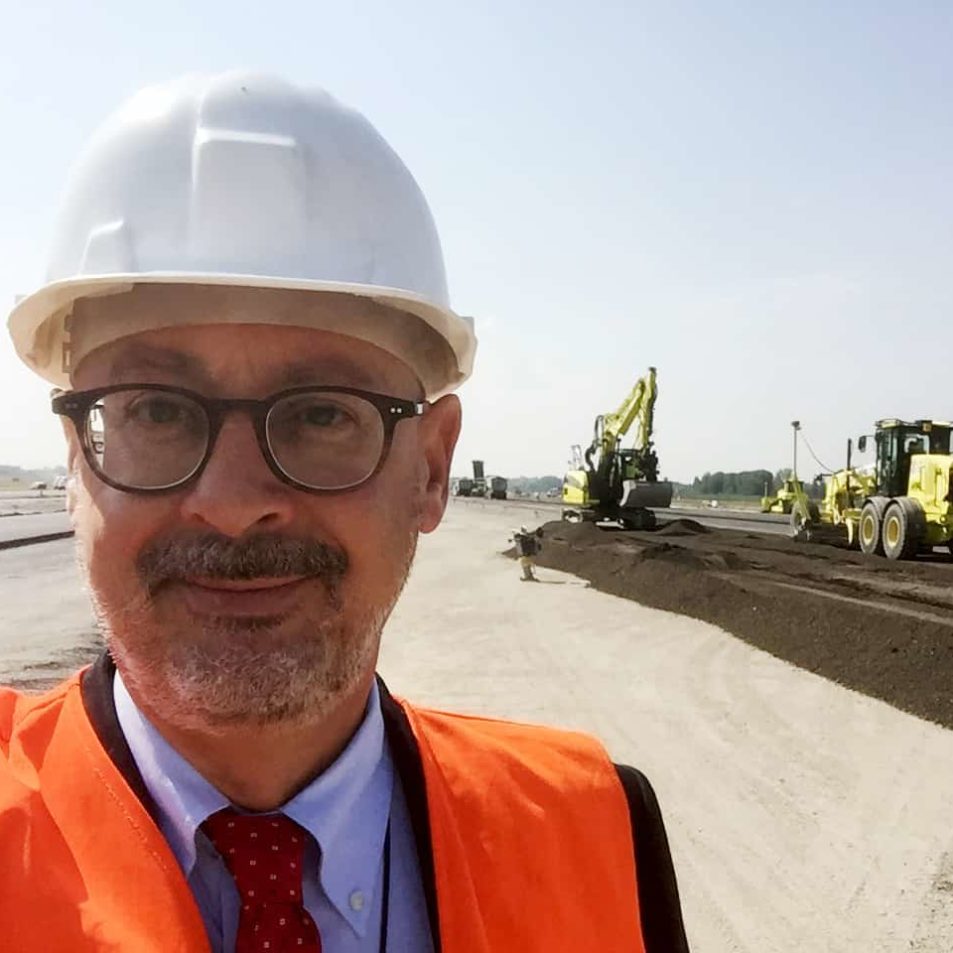Company
S.E.A. S.p.A. – 20090 Milan Linate Airport – Italy (www.seamilano.eu)


S.E.A. S.p.A. – 20090 Milan Linate Airport – Italy (www.seamilano.eu)

This complex and challenging experience demonstrated an ability to work effectively under high pressure and keep a calm and clear mindset to make appropriate decisions, rather than hasty or impulsive decisions. This of course also demonstrated an ability to meet the expected time and quality of work. All team-members/players cooperated and coordinated with each other as a tight-knit team, with each component aiming to achieve a common goal.
February 2014 – November 2019
The intervention to improve efficiency, perceived quality, and the increment of commercial offer entailed the demolition of the Passengers Terminal Buildings “F” and “F-est” (consisting of one level on the ground floor and one underground) and the reconstruction of the new Bulding “F”, consisting of 3 floors above ground, in addition to the seismic adaptation of the adjacent Buildings “A”, “A2est” and “A extension” of the Passengers Terminal.
To be able to carry out the above-mentioned interventions, however, it was necessary to carry out a whole series of preparatory works (about 7 further interventions) in order to create the spaces necessary to adapt the BHS system and to be able to move the air conditioning equipment and electric substation before demolition of Building “F”.
After an in-depth technical-economic analysis and countless meetings and discussions with the various stakeholders (State bodies, Airlines, Handling Companies, Shareholders, etc.) it was concluded that to be able to make these interventions, it would need to close Linate Airport for 3 months, from 27th July to 27th October 2019, moving all the affected traffic to Malpensa (“Bridge Project”).
Considering that passenger traffic at Malpensa Airport continued to increase at double the rate, the traffic transfer from Linate would lead to an instant traffic increase at Malpensa Airport of about 40%, with the need to extend/integrate whole subsystems sets in order to adapt them to the new required capacity.
In particular, it was needed to carry out the interventions on the following subsystems:
A total of 22 major projects were planned for both Linate and Malpensa Airports at the related construction sites.
The Malpensa construction sites had to be completed by 25th July 2019, whereas Linate’s had to be reopened (with a new runway and a new BHS) by 27th October 2019.
Works on Building “F” of Linate Terminal will continue until the first months of 2021.
One Project Engineer was appointed for each intervention, while two Project Managers were appointed, one for the Linate works and one for the Malpensa works.
For the Infrastructure Department weekly Performance meetings were scheduled, although meetings with Top Management and all Departments involved were scheduled fortnightly.
Daily meetings took place with both internal and external designers.
Preparation of a very detailed general schedule for analysing deviations and identifying critical delays as early as possible.
Involvement of all resources committed to the various projects, listening, timely resolution of problems, meetings with the State Authorities and Stakeholders to illustrate projects, operational restrictions and commercial changes, among other things.
Coordination of all the project activities.
The experience gained has made it possible to highlight the ability to manage a very complex and articulated multi-project with a total value of tens of millions of euros with considerable pressure from the Company and therefore with considerable sustainability, as well as meeting the fixed and mandatory deadlines (shut-down and reopening dates of Linate Airport could not be changed).
Therefore, it was essential to learn how to manage highly-complex and articulated design and construction situations, with strong psychological and physical stress, as a failure of all or part of the project would have been totally unacceptable for the Company’s Business Reputation and Continuity.
All the extraordinary maintenance projects planned at Malpensa Airport were completed on time and the required authorizations were received from the relevant Authorities (ENAC/Italian Civil Aviation Authority, ENAV/Italian Air Traffic Service Provider, ATS/Italian Health and Safety Agency, VVF/Fire Brigade, Lombardy Region, ARPA/Regional Agency for Environmental Protection, among other bodies).
All the works were completed by the week of 15th to 19th July 2019, which was in compliance with the expected deadlines.
Therefore, the result for Malpensa Airport was positively achieved, having adapted all the infrastructure to accommodate the additional traffic from Linate. During the 3 months of Linate Airport’s shut-down, Malpensa Airport was able to manage (with a positive outcome and with no particular operational problems) passenger traffic that had increased by 40%.
All the Linate projects were completed on time and the relative authorizations were received from the relevant Authorities (ENAC, ENAV, ATS, VVF, Lombardy Region, Police, GdF/Guardia di Finanza, among other bodies). The construction sites of the preparatory works had already been started in advance and the works’ progress continued in line with the general scheduled forecasts.
All the planned works (in particular those relating to: demolishing/reconstructing Building F of the passenger Terminal, modifying and adapting the BHS system to the incorporation of the new CT EDS Standard 3 ECAC equipment and refurbishing Runway 18/36, Taxiway T and civil works for 400Hz on the North APRON), which started from 28th July 2019, i.e., as soon as Linate Airport had been closed.
The result for Linate Airport had also been positively achieved, having completed all the planned works by the deadlines and reopened Linate Airport for commercial and General Aviation traffic by 27th October 2019, i.e., in accordance with the deadline.
When Linate Airport was reopened, all the subsystems (both new and modified ones, such as the Runway, Taxiway T, BHS system, etc.; and those adjacent to the construction sites to be completed by the beginning of 2021) functioned correctly, causing no functional or operational problems.